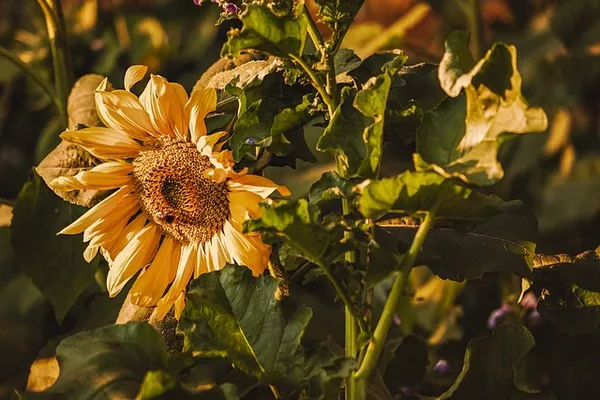Sunflowers, with their radiant blooms and towering stems, are not only a symbol of summer but also a testament to nature’s diversity. From the iconic Helianthus annuus to lesser-known species, the sunflower family encompasses a plethora of varieties, each with its unique characteristics and adaptations. In this article, we embark on a journey to uncover the vast array of sunflower species, shedding light on their origins, characteristics, and significance.
Introduction to Sunflowers
Before delving into the myriad of sunflower varieties, it’s essential to understand the botanical significance of this vibrant plant family. Sunflowers belong to the genus Helianthus, derived from the Greek words “helios” meaning sun and “anthos” meaning flower. This genus encompasses over 70 species, distributed across North and South America.
The most renowned member of the sunflower family is Helianthus annuus, commonly known as the common sunflower or annual sunflower. Native to North America, Helianthus annuus boasts large, yellow blooms and can reach towering heights, making it a favorite among gardeners and farmers alike.
Exploring Sunflower Diversity
While Helianthus annuus steals the spotlight, numerous other sunflower species display remarkable diversity in their appearance, habitat, and ecological adaptations. Let’s delve into some of the lesser-known varieties that contribute to the rich tapestry of sunflower biodiversity:
1. Helianthus maximiliani (Maximilian Sunflower): Native to the central and eastern United States, Helianthus maximiliani is characterized by its tall stature and slender leaves. This perennial sunflower species thrives in prairies, open woodlands, and along roadsides, attracting pollinators with its bright yellow flowers.
2. Helianthus tuberosus (Jerusalem Artichoke): Unlike its ornamental counterparts, Helianthus tuberosus is cultivated primarily for its edible tubers rather than its blooms. Also known as Jerusalem artichoke, this sunflower species produces small, sunflower-like flowers atop tall stems, while its underground tubers serve as a nutritious root vegetable.
3. Helianthus petiolaris (Prairie Sunflower): Indigenous to the central United States and Canada, Helianthus petiolaris thrives in dry prairies and sandy soils. Its distinctive features include narrow leaves and smaller, yellow-orange flowers with dark centers. This sunflower species is valued for its ability to withstand drought conditions.
4. Helianthus divaricatus (Woodland Sunflower): As the name suggests, Helianthus divaricatus is commonly found in woodland habitats across the eastern United States. Unlike its sun-loving relatives, this species thrives in partial shade and features smaller, daisy-like flowers with yellow petals and brown centers, adding a touch of brightness to shaded woodland areas.
5. Helianthus angustifolius (Swamp Sunflower): Found in wetland habitats and along waterways in the southeastern United States, Helianthus angustifolius is well-adapted to moist, swampy conditions. Its slender stems bear bright yellow flowers with slender petals, attracting a myriad of pollinators to its marshy habitat.
6. Helianthus giganteus (Giant Sunflower): True to its name, Helianthus giganteus is one of the tallest sunflower species, reaching heights of up to 12 feet. Native to the eastern United States, this species thrives in moist meadows and along stream banks, producing large, yellow flowers that serve as a beacon for bees and butterflies.
Cultural and Economic Significance
Beyond their botanical diversity, sunflowers hold cultural and economic significance worldwide. Across various cultures, sunflowers have been revered as symbols of vitality, happiness, and resilience. In Native American folklore, sunflowers are associated with solar deities and are believed to possess spiritual significance.
From an economic perspective, sunflowers play a vital role in agriculture, providing a source of food, oil, and livestock feed. Helianthus annuus, in particular, is cultivated extensively for its nutritious seeds, which are rich in protein, healthy fats, and essential nutrients. Sunflower oil, extracted from the seeds, is used in cooking, cosmetics, and biofuel production, contributing to global markets and economies.
Conservation and Preservation Efforts
Despite their cultural and economic importance, many sunflower species face threats from habitat loss, climate change, and invasive species. Conservation efforts are underway to protect and preserve vulnerable sunflower habitats, ensuring the survival of these diverse plant species for future generations.
Organizations such as the Center for Plant Conservation and the International Union for Conservation of Nature (IUCN) work tirelessly to assess the conservation status of sunflower species and implement strategies to safeguard their habitats. These efforts include habitat restoration, seed banking, and public awareness campaigns aimed at promoting the importance of sunflower conservation.
Conclusion
In conclusion, the world of sunflowers is teeming with diversity, encompassing a vast array of species with unique traits and adaptations. From the towering Helianthus annuus to the delicate woodland sunflower, each variety contributes to the rich tapestry of sunflower biodiversity.
As stewards of the environment, it is our responsibility to appreciate and protect these invaluable plant species, ensuring their survival for generations to come. By embracing sunflower diversity and supporting conservation efforts, we can preserve the beauty and ecological significance of these iconic flowers for future generations to enjoy.


